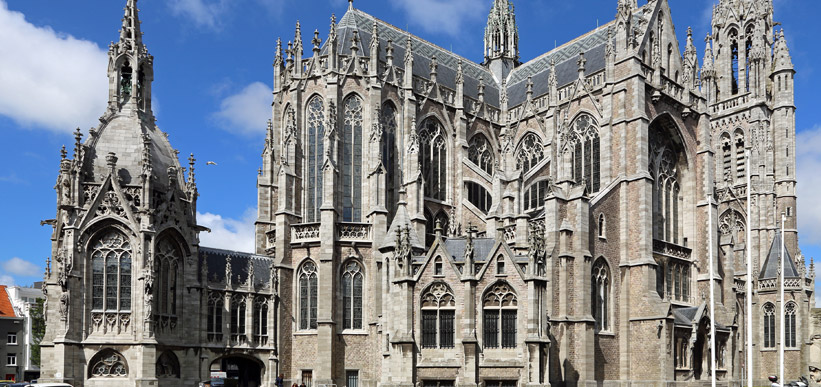The mid-19th century saw the rise of Picturesque and Romantic movement in the world of European architecture. It largely reflected people’s liking towards buildings that borrowed influences from the medieval design. The Gothic Revival style of architecture was a part of this architectural movement. It was quite different from the styles of buildings that had previously gained immense popularity.
Earlier, the architecture of buildings was inspired by the classical styles of ancient Greece and Rome. However, throughout the mid-19th century, the Gothic Revival and the Greek Revival architectural styles remained popular. While being distinctly different, these two styles of architecture were apparently inspired by the structures built in the past.
In America, the Gothic Revival style was used extensively by the architects Andrew Jackson Downing and Alexander Jackson Davis. They promoted this style of architecture while building country homes in rural areas or small towns. According to them, this architectural style had irregular and complex shapes and forms, which blended well with natural surroundings.
Features
Almost all the churches were built using the Gothic Revival style during those times. The style elements like tracery windows, castle-like towers, and parapets were common in such structures. It also included the pointed Gothic arched windows and entrances. A distinctive variation of this architectural style was the Carpenter Gothic style used in American homes during those times.
One of the most identifiable features of the Gothic Revival style of architecture is the pointed arch. It was used for doors, windows, porches, roof gables, and dormers. Other features of this architectural style included front-facing gables and steeply pitched roofs. The front-facing gables had a delicate wooden trim known as ‘bargeboards’.
This incised wooden trim was also referred to as ‘gingerbread’. Buildings constructed in this style of architecture had porches with slender columns or decorative turned posts. These posts were connected by side brackets or flattened arches. Many wonderful examples of Gothic Revival style in buildings can be found in the state of Pennsylvania in the United States.
Churches built in the Gothic Revival style didn’t just have pointed arch windows and porticos. They often featured a castle-like tower with a high spire. The state of Pennsylvania has many such buildings that characterize a more vernacular character and high style. Many of the churches, schools, and prisons built in the Gothic Revival style have ornate architectural detailing.
Variations
While getting around in Pennsylvania, one can find that the Gothic details are quite few in the more common vernacular buildings. They are usually a front-facing gable with wooden trim and pointed arch windows. Rowhouses and duplexes in the urban settings may also feature the Gothic Revival details. In the later part of the 19th century, a style known as ‘Victorian Gothic’ gained popularity.
This style of architecture mixed the Gothic Revival details with the elements of other styles of the Victorian era. A distinct variation called the Collegiate Gothic style of architecture was also developed around this period. It was used primarily for the construction of educational institutions. This style has made a comeback in the 21st century in some new school and university buildings.

